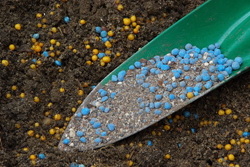The wonders of soil microorganisms
Loss of ammonia from the soil through nitrification by soil organisms is proving extremely costly to both farmers and the environment. Once thought to be the sole domain of autotrophic bacteria, nitrification results in the loss of ammonia-based fertilisers and the production of a potent air pollutant and greenhouse gas (GHG), nitrous oxide, which also causes ozone depletion. Scientists have recently discovered another nitrifying culprit, autotrophic crenarchaea (recently renamed Thaumarchaeota which literally means miracle or wonder in Greek). Although archaea have been cultivated from marine and thermal spring environments, none have so far been isolated from soil. There is indirect genetic evidence from soil however, that archaeal ammonia oxidisers outweigh their bacterial counterparts in a wide range of soils. The project 'The role of mesophilic crenarchaea in soil nitrification' (Creneco) aimed to assess the respective contributions to soil ammonia oxidation by bacteria and thaumarchaea. They also investigated whether autotrophic, as opposed to heterotrophic, ammonia oxidation is a common feature of soil Thaumarchaea. Soil local to the University of Aberdeen was assessed for bacterial and archaeal communities using DNA-based fingerprinting, quantification of 16S ribosomal RNA (rRNA) and archaeal genes (amoA genes). Increases in the rRNA and amoA genes during nitrification indicates that ammonia oxidation was mostly due to the soil archaea as at the same time there was no evidence of growth in the bacterial community. To assess the extent of autotrophic archaeal nitrification, Creneco scientists studied a key gene, hcd, in the autotrophic pathway, unknown in heterotrophic lineages. Appropriate polymerase chain reaction (PCR) markers were developed and an abundance of hcd in two local soils (one acidic and one neutral) was assessed. Increases in gene abundance at the same time as nitrification provided evidence of archaeal nitrification. Use of 13C-labelled carbon dioxide also indicated that archaea were the dominant nitrifiers in the soils. Creneco results mean that archaeal ammonia oxidation should be a significant part of current models of carbon and nitrogen cycling. The research and its follow up will have significance in many areas including agriculture, health and global warming through nitrogen fertiliser loss, nitrate pollution of groundwaters, and GHG emission respectively.







